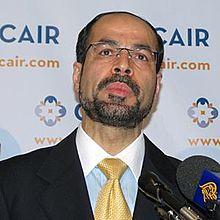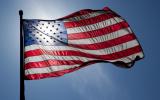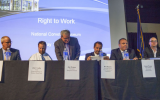Do As I Say, Not As I Do

By Olivia Grady
Recently, liberal groups, despite being supportive of forced unionization, have fought efforts to unionize their own workforce.
One example is the Council on American-Islamic Relations (CAIR), a powerful Muslim civil rights group that was indirectly created by Hamas and is still connected to that terrorist organization, according to Daniel Pipes, President of the Middle East Forum.
CAIR is headquartered in Washington, DC as a non-profit nongovernmental organization (a tax-exempt 501(c)(3) organization), with 30 regional offices. It has more than 70 people on staff. It was founded in 1994 by Nihad Awad, who publicly supported Hamas at Barry University on March 22, 1994. In addition, CAIR has contributed to and received donations from the Holy Land Foundation, a Hamas front group.
The Service Employees International Union (SEIU) is trying to unionize the staff at CAIR’s Washington office. SEIU Local 500 would represent all full time and regular part-time non-professional employees at the DC office if it wins an election. The bargaining unit would include “technical support employees, administrative assistants, office managers, archivist and multimedia employees,” attorneys and others, but would exclude "directors of islamophobia, directors of chapter development, directors of communication, controllers" and others.
CAIR has fought the unionization of its staff before the National Labor Relations Board (NLRB). It argued that it is exempt from the National Labor Relations Act (NLRA) because it is a religious organization. On the Board’s website, there is a description of special categories that the Board does not have as much jurisdiction over.
One of these is religious organization:
Religious organizations: The Board will not assert jurisdiction over employees of a religious organization who are involved in effectuating the religious purpose of the organization, such as teachers in church-operated schools. The Board has asserted jurisdiction over employees who work in the operations of a religious organization that did not have a religious character, such as a health care institution.
Interestingly, this issue of exempting religious organization staff from unionization has been litigated in the courts.
On March 21, 1979, the U.S. Supreme Court addressed this issue in NLRB v. Catholic Bishop of Chicago. The questions before the Court were whether Catholic high school teachers who taught both religious and secular subjects were within the NLRB’s jurisdiction and if so, is this a violation of the First Amendment freedom of religion?
The Court found that Congress did not intend to include religious schools in the NLRA, and therefore, the Court did not answer the Religious Freedom question:
The Board relies heavily upon Associated Press v. NLRB, 507*507 301 U. S. 103 (1937). There the Court held that the First Amendment was no bar to the application of the Act to the Associated Press, an organization engaged in collecting information and news throughout the world and distributing it to its members. Perceiving nothing to suggest that application of the Act would infringe First Amendment guarantees of press freedoms, the Court sustained Board jurisdiction. Id., at 131-132. Here, on the contrary, the record affords abundant evidence that the Board's exercise of jurisdiction over teachers in church-operated schools would implicate the guarantees of the Religion Clauses.
Accordingly, in the absence of a clear expression of Congress' intent to bring teachers in church-operated schools within the jurisdiction of the Board, we decline to construe the Act in a manner that could in turn call upon the Court to resolve difficult and sensitive questions arising out of the guarantees of the First Amendment Religion Clauses.
In University of Great Falls v. NLRB (2002), the DC Circuit followed the Supreme Court’s decision and introduced a three-part test to determine if faculty members at Catholic colleges could fall within the Board’s jurisdiction.
According to the three-part test, the Board does not have jurisdiction if the college:
“(a) holds itself out to students, faculty and the community as providing a religious educational environment; (b) is organized as a nonprofit; and (c) is affiliated with, or owned, operated, or controlled, directly or indirectly, by a recognized religious organization, or with an entity, membership of which is determined, at least in part, with reference to religion.”
However, in 2014, the NLRB created its own two-part test in Pacific Lutheran University:
After careful consideration of applicable case law, as well as the positions of the parties and amici, we have decided that we will not decline to exercise jurisdiction over faculty members at a college or university that claims to be a religious institution unless the college or university first demonstrates, as a threshold matter, that it holds itself out as providing a religious educational environment. Once that threshold requirement is met, the college or university must then show that it holds out the petitioned-for faculty members as performing a religious function. This requires a showing by the college or university that it holds out those faculty as performing a specific role in creating or maintaining the university’s religious educational environment.
This test has allowed the Board to expand its jurisdiction. For example, it can now represent non-tenure eligible faculty at Seattle University, a university founded by the Jesuits, as long as they don’t teach Religious Studies.
In CAIR’s case, the NLRB found on April 7, 2017, that CAIR was more of a civil rights and advocacy organization than a religious organization:
"The evidence establishes that the employer is not an organization that exists to propagate a religious faith, but rather is engaged in a commercial-type activity," NLRB Regional Director Charles Posner said.
Therefore, the group’s employees could be unionized, and the NLRB has scheduled the employees’ election for April 24, 2017.
Another example of when liberal groups have opposed unionization is Media Matters for America, where leadership initially opposed unionization of its staff in 2014, but eventually reluctantly gave in.
SEIU Local 500 was trying to unionize Media Matters workers in 2014. However, after the union asked the organization to submit to a “Card Check” election, David Brock, the CEO of Media Matters, wrote “no reply” in the form. The media group then hired lawyers to represent it before the NLRB and forced a secret ballot election. On June 30, 2014, Media Matters workers voted to join the union.
The Center for Worker Freedom is glad to see liberals finally understanding the consequences of unionization.





